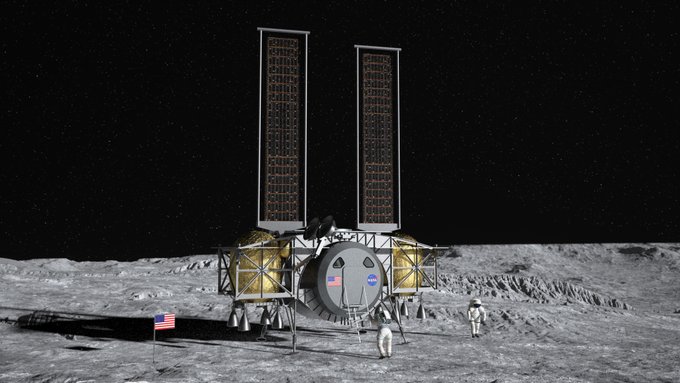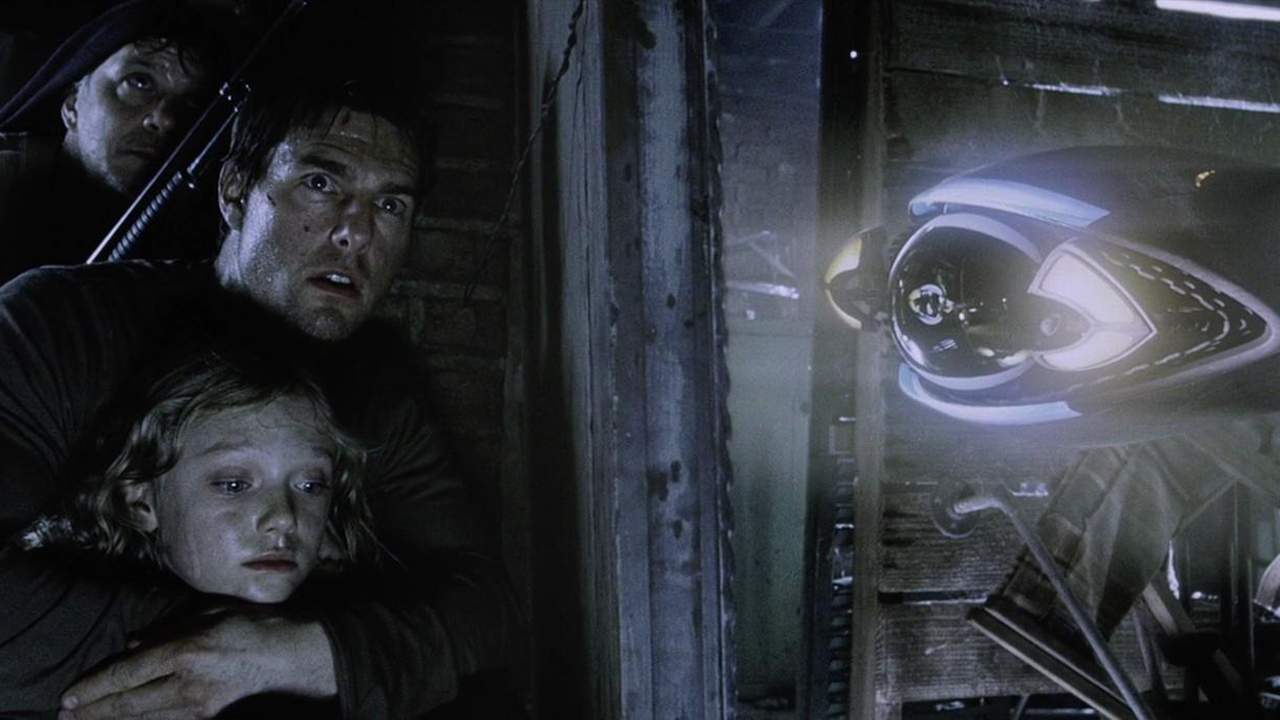
The moon landers that three commercial teams are developing to ferry astronauts to and from the lunar surface for NASA are a diverse bunch.
On Thursday (April 30), NASA announced that it had awarded contracts to three commercial teams, each of which will develop a human landing system for use by the space agency's Artemis program. Artemis aims to put two astronauts down near the moon's south pole in 2024 and establish a sustainable presence on and around Earth's natural satellite by the late 2020s.
SpaceX, Dynetics and a team led by Blue Origin will split a total pot of $967 million, which will fund 10 months of development work. NASA will then tab one or more of these teams to mature their systems. In the end, the space agency will procure crewed lunar transportation services from the options that are left on the table.
Related: NASA unveils plan for Artemis 'base camp' on the moon beyond 2024
The options are, at this early stage anyway, quite varied, for the commercial teams are taking very different approaches to their landers. SpaceX, for example, will continue developing its Starship deep-space transportation system, which Elon Musk's company envisions making Mars colonization and other bold exploration feats economically feasible.
SpaceX's Starship megarocket
The 165-foot-tall (50 meters) Starship will launch off Earth atop a giant rocket called Super Heavy. Both of these elements will be reusable; each Super Heavy will come back down for a vertical landing shortly after liftoff, and each Starship will fly many missions once it's aloft, Musk has said. (Starship needs Super Heavy only to get off our planet; the spacecraft will be powerful enough to launch itself off the surface of the moon or Mars.)
Starship will be capable of carrying up to 100 people at a time, Musk has said. NASA wouldn't come close to filling the possible seats on each Artemis flight — the 2024 landing mission, for example, will carry just two astronauts — but the agency would doubtless find a use for all of the vehicle's space and power. (Starship will be able to haul 100 tons of payload to the lunar surface.)
Breaking space news, the latest updates on rocket launches, skywatching events and more!

Thursday's announcement deepens SpaceX's involvement with NASA's moon-exploration plans, which was already extensive. For example, the company is eligible to deliver robotic NASA payloads to the lunar surface using Starship, work the space agency says will help pave the way for crewed Artemis visits.
And last month, SpaceX secured a contract to supply Gateway, the small space station that NASA plans to build in lunar orbit as a jumping-off point for surface missions, using an extra-large version of its Dragon cargo capsule. Gateway is an important part of the agency's long-term moon plans but will probably not be involved in the 2024 landing, agency officials have said.
Related: What is NASA's Artemis program?
Dynetics' 2-person lander
Whereas Starship represents a single-stage approach to lunar landing, Alabama-based Dynetics will develop "a two-stage architecture, with a common ascent and descent element and anytime abort capability," Lisa Watson-Morgan, Human Landing System program manager at NASA's Marshall Space Flight Center in Huntsville, Alabama, said in a teleconference with reporters on Thursday.
"It has a unique low-slung crew module, putting the crew very close to the lunar surface for safe access," Watson-Morgan added.


The Dynetics lander's crew module is designed to accommodate two astronauts on trips to and from lunar orbit, including stays on the moon's surface of about a week, representatives of the company, which is a wholly owned subsidiary of Leidos, said in a statement. But that's the nominal use case; the lander could also fit four fully suited astronauts on brief trips to or from the lunar surface if need be.
Blue Origin's 'National Team'
The third team is led by Jeff Bezos' Blue Origin, with participation from Lockheed Martin, Northrop Grumman and Draper. This group will develop a three-stage architecture, which features descent, ascent and transfer elements.
The descent stage will be based on Blue Origin's Blue Moon lander and BE-7 engine, which the company has been working on for a few years now. The ascent stage will leverage Lockheed's experience developing the Orion crew capsule. (Lockheed is prime contractor for Orion, NASA's next crewed vehicle, which will carry agency astronauts toward the moon and other deep-space destinations.)

The transfer element will be based on Northrop Grumman's Cygnus freighter, which flies robotic cargo missions to the International Space Station under a separate NASA contract. Draper, meanwhile, will lead descent guidance and provide flight avionics, Blue Origin representatives said in a statement.
NASA solicited proposals for human landing systems in late September 2019, and submissions were due in early November. At the time, the agency was hoping the call would inspire innovative concepts, Watson-Morgan said.
"And boy did they deliver," she said Thursday of the three awardees.
Watson-Morgan also highlighted the diversity of architectures, saying it achieves the "dissimilar redundancy of approaches that we wanted."
- SpaceX's Starship and Super Heavy Mars rocket in pictures
- Blue Moon: Here's how Blue Origin's new lunar lander works
- Moon master: An easy quiz for lunatics
Mike Wall is the author of "Out There" (Grand Central Publishing, 2018; illustrated by Karl Tate), a book about the search for alien life. Follow him on Twitter @michaeldwall. Follow us on Twitter @Spacedotcom or Facebook.
OFFER: Save 45% on 'All About Space' 'How it Works' and 'All About History'!
For a limited time, you can take out a digital subscription to any of our best-selling science magazines for just $2.38 per month, or 45% off the standard price for the first three months.
Join our Space Forums to keep talking space on the latest missions, night sky and more! And if you have a news tip, correction or comment, let us know at: community@space.com.

Michael Wall is a Senior Space Writer with Space.com and joined the team in 2010. He primarily covers exoplanets, spaceflight and military space, but has been known to dabble in the space art beat. His book about the search for alien life, "Out There," was published on Nov. 13, 2018. Before becoming a science writer, Michael worked as a herpetologist and wildlife biologist. He has a Ph.D. in evolutionary biology from the University of Sydney, Australia, a bachelor's degree from the University of Arizona, and a graduate certificate in science writing from the University of California, Santa Cruz. To find out what his latest project is, you can follow Michael on Twitter.
-
Jdcooper I appreciate the need to let contracts to acquire long-lead items. But... The degree of tone-deafness by NASA while announcing this NOW is bewildering. What are they thinking announcing a billion dollar program during a pandemic and depression?Reply -
Joe Brooks Reply
This not new. This part of the Artemis program, which was started long before we ever heard of Covid-19. Programs like this can't stop and start every time something happens. They continue as best they can under the new circumstances.Jdcooper said:I appreciate the need to let contracts to acquire long-lead items. But... The degree of tone-deafness by NASA while announcing this NOW is bewildering. What are they thinking announcing a billion dollar program during a pandemic and depression?
NASA is certainly not tone deaf regarding the epidemic. They even developed a new, cheaper ventilator that's just received FDA approval.

